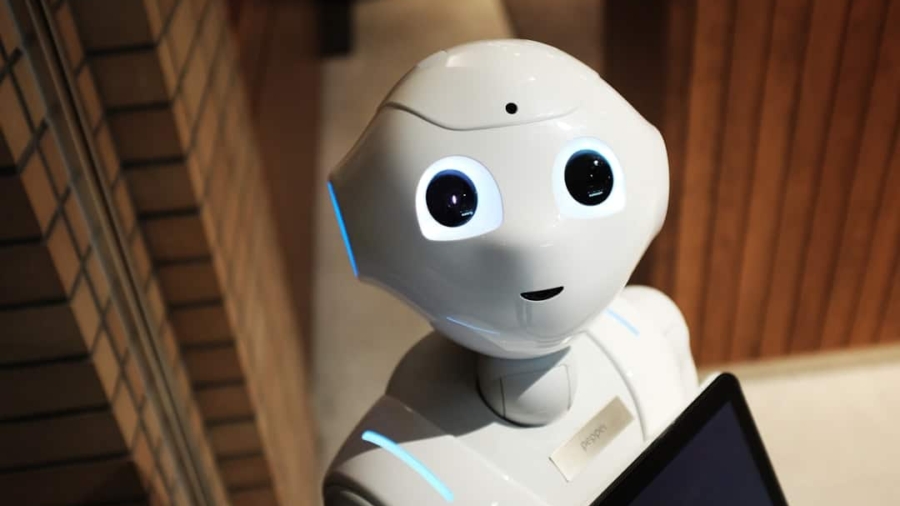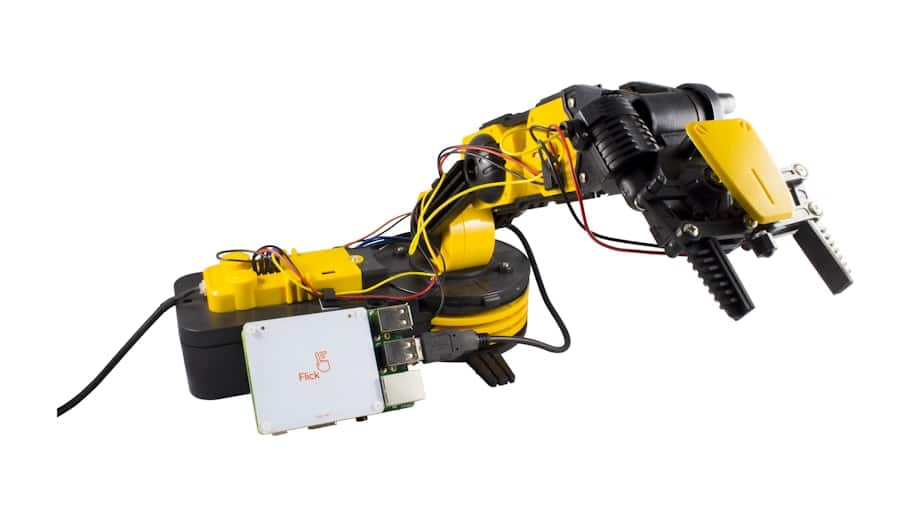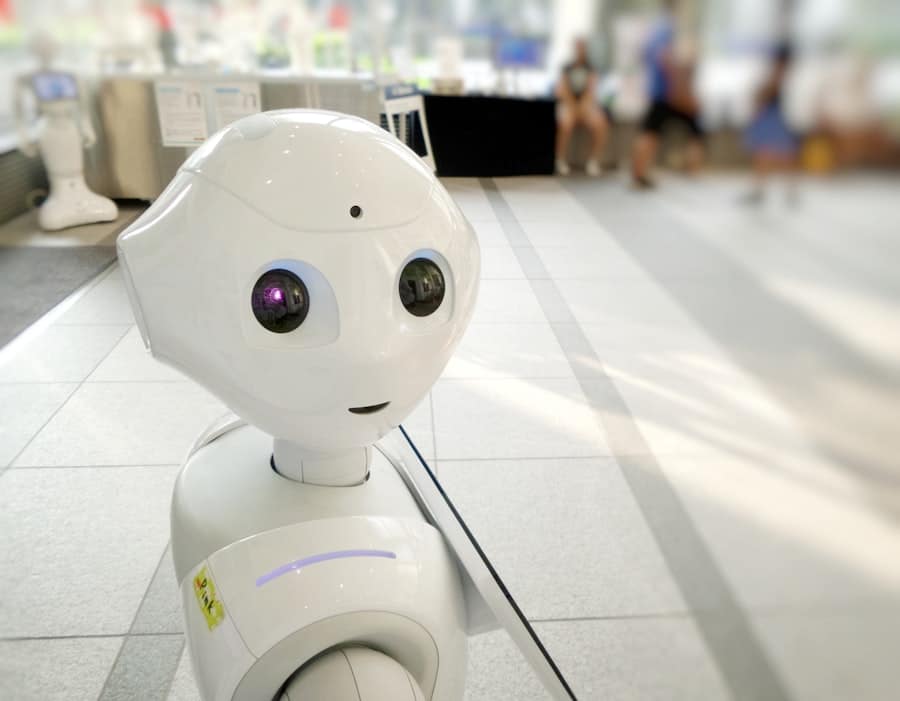The concept of self-healing robots has emerged as a fascinating intersection of robotics, materials science, and artificial intelligence. These innovative machines possess the remarkable ability to autonomously detect and repair damage, mimicking biological organisms that can heal themselves. The idea is not merely a futuristic fantasy; it is grounded in ongoing research and development that aims to create robots capable of maintaining their functionality over time, even in the face of wear and tear or unexpected damage.
This capability could revolutionize various industries by reducing downtime, enhancing safety, and lowering maintenance costs. Self-healing robots are designed to operate in environments where human intervention may be limited or hazardous. For instance, they can be deployed in disaster recovery scenarios, deep-sea exploration, or even space missions where repairs are challenging due to extreme conditions.
The integration of self-healing mechanisms into robotic systems not only enhances their resilience but also extends their operational lifespan. As we delve deeper into the advancements in artificial intelligence and materials science, the potential applications and implications of self-healing robots become increasingly significant.
Key Takeaways
- Self-healing robots are a new and innovative technology that has the potential to revolutionize various industries.
- Advancements in AI have enabled self-healing robots to detect and repair damages without human intervention, making them more efficient and cost-effective.
- Self-healing robots have a wide range of applications in industrial settings, including manufacturing, construction, and infrastructure maintenance.
- Despite their potential, self-healing robots still face challenges such as limited material options and the complexity of integrating AI and IoT systems.
- The integration of AI and IoT technologies is crucial for the development of self-healing robots, as it allows for real-time monitoring and decision-making capabilities.
Advancements in AI for Self-Healing Robots
Artificial intelligence plays a pivotal role in the development of self-healing robots, enabling them to assess their condition, identify damage, and execute repairs autonomously. Recent advancements in machine learning algorithms have equipped these robots with the ability to learn from their experiences, improving their diagnostic capabilities over time. For instance, deep learning techniques allow robots to analyze vast amounts of data from sensors that monitor their structural integrity.
By recognizing patterns associated with wear or damage, these robots can predict potential failures before they occur, thereby initiating self-repair processes proactively. Moreover, AI-driven decision-making enhances the efficiency of self-healing mechanisms. For example, researchers have developed algorithms that enable robots to choose the most effective repair strategy based on the type and extent of damage detected.
This adaptability is crucial in dynamic environments where conditions can change rapidly. In some cases, robots can even collaborate with one another to share information about their status and coordinate repair efforts, further optimizing their performance. The synergy between AI and self-healing technologies is paving the way for more sophisticated robotic systems that can operate autonomously in complex environments.
Applications of Self-Healing Robots in Industrial Settings
In industrial settings, self-healing robots are poised to transform operations across various sectors, including manufacturing, logistics, and maintenance. One prominent application is in automated assembly lines, where robots are tasked with repetitive tasks that can lead to mechanical wear over time. By incorporating self-healing capabilities, these robots can autonomously address minor malfunctions or wear-related issues without halting production.
This not only minimizes downtime but also enhances overall productivity by ensuring that operations continue smoothly. Another significant application lies in the realm of logistics and warehousing. Self-healing robots can navigate complex environments filled with obstacles while managing inventory and transporting goods.
If a robot encounters a physical obstruction or sustains damage during its operation, its self-healing mechanisms allow it to assess the situation and make necessary repairs on the spot. This capability is particularly valuable in environments where human workers may be at risk or where quick responses are essential for maintaining workflow efficiency. The integration of self-healing technology into industrial robotics represents a substantial leap forward in operational resilience and efficiency.
Challenges and Limitations of Self-Healing Robots
Despite the promising advancements in self-healing robotics, several challenges and limitations remain that must be addressed for widespread adoption. One significant hurdle is the complexity of developing materials that can effectively mimic biological healing processes. While researchers have made strides in creating synthetic materials with self-healing properties, these materials often face limitations regarding their durability and effectiveness under various environmental conditions.
For instance, certain self-healing polymers may not perform well at extreme temperatures or in corrosive environments, which could restrict their applicability in certain industrial settings. Additionally, the integration of self-healing capabilities into existing robotic systems poses technical challenges. Retrofitting traditional robots with self-healing mechanisms requires significant engineering efforts and may not always be feasible.
Furthermore, there are concerns regarding the reliability of these systems; if a robot’s self-healing process fails during critical operations, it could lead to catastrophic consequences. Ensuring that these robots can consistently perform repairs without compromising safety or functionality is paramount. Addressing these challenges will require ongoing research and collaboration between material scientists, robotic engineers, and AI specialists.
Integration of AI and IoT for Self-Healing Robots
The convergence of artificial intelligence and the Internet of Things (IoT) is set to enhance the capabilities of self-healing robots significantly. IoT devices equipped with sensors can provide real-time data on a robot’s operational status, environmental conditions, and potential hazards. This data can be analyzed using AI algorithms to facilitate predictive maintenance and optimize self-healing processes.
For example, a network of IoT sensors could monitor a fleet of self-healing robots operating in a warehouse, allowing for centralized data analysis that identifies trends in wear and tear across multiple machines. Moreover, the integration of AI and IoT enables remote monitoring and control of self-healing robots. Operators can receive alerts about potential issues before they escalate into significant problems, allowing for timely interventions or adjustments to repair strategies.
This capability is particularly beneficial in scenarios where human oversight is limited or impractical. By leveraging IoT connectivity, self-healing robots can communicate with each other and share insights about their operational conditions, leading to more coordinated repair efforts and improved overall system performance.
Future Prospects and Opportunities for Self-Healing Robots
Advancements in Materials Science and AI
As research continues to advance in materials science and AI technologies, we can expect to see more sophisticated self-healing mechanisms that enhance the durability and functionality of robotic systems. For instance, innovations in bio-inspired materials could lead to robots that not only repair themselves but also adapt their physical properties based on environmental stimuli—much like living organisms do.
Industry Applications
Furthermore, as industries increasingly embrace automation and robotics, the demand for resilient systems will grow. Self-healing robots could play a crucial role in sectors such as healthcare, where they might assist in surgeries or patient care while maintaining high levels of reliability. In agriculture, these robots could autonomously manage crops while repairing themselves from environmental damage or wear caused by harsh conditions.
Limitless Potential
The potential applications are limited only by our imagination and technological advancements. As the field continues to evolve, we can expect to see self-healing robots making a significant impact across various industries, revolutionizing the way we work and live.
Ethical and Legal Considerations in the Use of Self-Healing Robots
As with any emerging technology, the deployment of self-healing robots raises important ethical and legal considerations that must be addressed proactively. One primary concern revolves around accountability: if a self-healing robot malfunctions or causes harm due to a failure in its repair mechanisms, who is responsible? Determining liability in such cases could be complex, especially if the robot operates autonomously without direct human oversight.
Additionally, there are ethical implications related to job displacement as industries adopt more advanced robotic systems capable of performing tasks traditionally carried out by humans. While self-healing robots can enhance efficiency and safety in various settings, they may also lead to reduced employment opportunities for workers in certain sectors. It is essential for policymakers to consider these implications when developing regulations governing the use of robotics in industry.
The Impact of AI on the Future of Self-Healing Robots
The integration of artificial intelligence into the realm of self-healing robotics represents a transformative shift in how we approach automation and machine resilience. As these technologies continue to evolve, they promise to enhance operational efficiency across various industries while addressing some of the inherent challenges associated with traditional robotic systems. The potential applications are vast—from manufacturing to healthcare—offering opportunities for innovation that could redefine our relationship with machines.
As we navigate this exciting frontier, it is crucial to remain mindful of the ethical and legal implications that accompany such advancements. By fostering collaboration among technologists, policymakers, and ethicists, we can ensure that the development of self-healing robots aligns with societal values while maximizing their benefits across diverse sectors. The future holds immense promise for these intelligent machines as they become integral components of our technological landscape.
In a recent article discussing the future of AI in self-healing robots for industrial use, it is fascinating to consider the potential impact of technology on various industries. As we look ahead to 2023, it is clear that the tech industry is booming, with high-paying jobs in demand. For those interested in exploring the best-paying jobs in tech, this article provides valuable insights. Additionally, the advancement of technology is opening up new possibilities, such as the Samsung Galaxy Chromebook, which promises to unlock a new world of opportunities.
For more information on the top smartwatches of 2023, check out this article.
FAQs
What is AI in self-healing robots for industrial use?
AI in self-healing robots for industrial use refers to the integration of artificial intelligence (AI) technology into robots used in industrial settings. These robots are equipped with AI capabilities to detect and repair faults or damages without human intervention, thus improving efficiency and reducing downtime.
How does AI enable self-healing in robots for industrial use?
AI enables self-healing in robots for industrial use by utilizing advanced algorithms and machine learning to continuously monitor the robot’s performance and identify any anomalies or malfunctions. Once a fault is detected, the AI system can autonomously initiate the necessary repairs or adjustments to restore the robot to optimal working condition.
What are the benefits of AI in self-healing robots for industrial use?
The benefits of AI in self-healing robots for industrial use include reduced downtime, increased productivity, cost savings on maintenance and repairs, improved safety, and the ability to proactively address issues before they escalate. Additionally, AI enables predictive maintenance, allowing for preemptive actions to be taken to prevent potential failures.
What are the potential applications of self-healing robots with AI in industrial settings?
Self-healing robots with AI have potential applications in various industrial settings, including manufacturing, logistics, warehousing, and assembly lines. These robots can be used for tasks such as material handling, quality control, machine tending, and repetitive assembly processes, among others.
What are the challenges and limitations of AI in self-healing robots for industrial use?
Challenges and limitations of AI in self-healing robots for industrial use include the initial investment required for implementing AI technology, the need for specialized expertise to develop and maintain AI systems, potential cybersecurity risks, and the ethical considerations surrounding autonomous decision-making by AI-powered robots. Additionally, the complexity of some repair tasks may still require human intervention.



